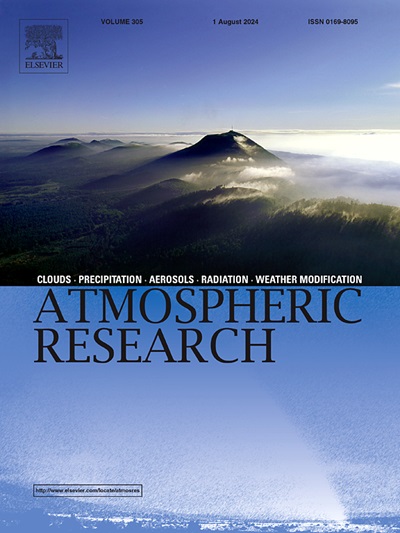基于热浪频发时长江三角洲地区注意机制模型的空气污染物预测
IF 4.4
2区 地球科学
Q1 METEOROLOGY & ATMOSPHERIC SCIENCES
引用次数: 0
摘要
热浪对城市环境构成重大威胁,主要通过加剧空气污染影响生态系统和公众健康。准确预测热浪期间的空气污染物浓度对于有关部门制定及时的预防和控制策略至关重要。因此,我们开发了 1D-CNN-BiLSTM-attention 模型,专门用于考虑与热浪条件相关的独特数据特征。我们的模型利用注意力机制来增强其学习和预测热浪期间空气污染物行为的能力。在六个基于场景的实验中,该模型表现出很高的预测准确性,MAPE 为 2.93%。该模型整合了温度、湿度、风速、云层和降水等气象指标,将其预测能力扩展到 150 千米的空间范围。在对长三角地区三个典型城市类型的适用性实验中,结果证实了该模型在预测空气污染物方面的有效性。这些研究结果凸显了该模型在区域范围内研究城市热浪期空气污染的实用性,证明了其在不同天气条件下的稳健性和可靠性。本文章由计算机程序翻译,如有差异,请以英文原文为准。
Air pollutant prediction based on a attention mechanism model of the Yangtze River Delta region in frequent heatwaves
Heatwaves pose significant threats to urban environments, affecting both ecological systems and public health, primarily through the exacerbation of air pollution. Accurate prediction of air pollutant concentrations during heatwave periods is crucial for authorities to develop timely prevention and control strategies. Thus, we developed the 1D-CNN-BiLSTM-attention model, specifically designed to account for the unique data characteristics associated with heatwave conditions. Our model leverages an attention mechanism to enhance its ability to learn and predict air pollutant behavior during heatwaves. Across six scenario-based experiments, the model demonstrated high predictive accuracy, achieving a MAPE of 2.93 %. The model integrates meteorological indicators such as temperature, humidity, wind speed, cloud cover, and precipitation, extending its predictive capability across a spatial range of 150 km. In experiments testing the model's applicability to three typical city types in the Yangtze River Delta region, the results confirmed its effectiveness in predicting air pollutants. These findings highlight the model's usefulness for studying air pollution during urban heatwave periods on a regional scale, demonstrating its robustness and reliability under varying weather conditions.
求助全文
通过发布文献求助,成功后即可免费获取论文全文。
去求助
来源期刊

Atmospheric Research
地学-气象与大气科学
CiteScore
9.40
自引率
10.90%
发文量
460
审稿时长
47 days
期刊介绍:
The journal publishes scientific papers (research papers, review articles, letters and notes) dealing with the part of the atmosphere where meteorological events occur. Attention is given to all processes extending from the earth surface to the tropopause, but special emphasis continues to be devoted to the physics of clouds, mesoscale meteorology and air pollution, i.e. atmospheric aerosols; microphysical processes; cloud dynamics and thermodynamics; numerical simulation, climatology, climate change and weather modification.
 求助内容:
求助内容: 应助结果提醒方式:
应助结果提醒方式:


